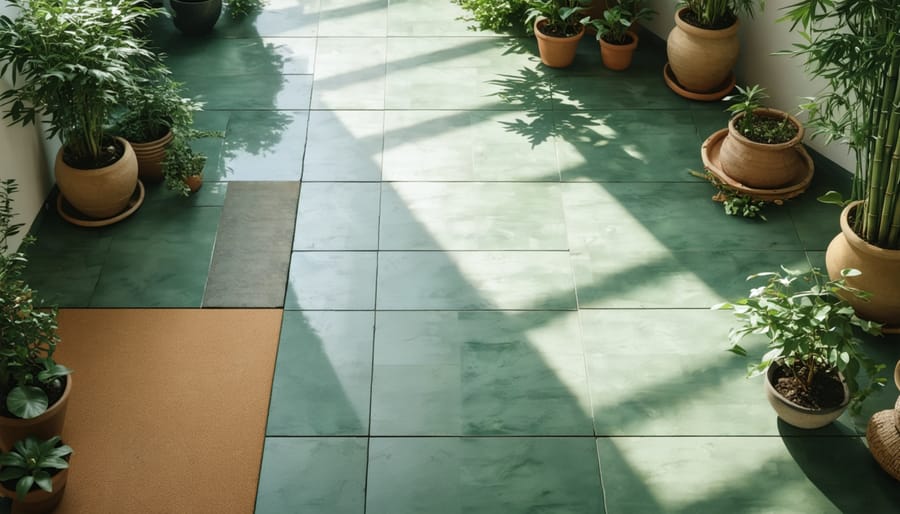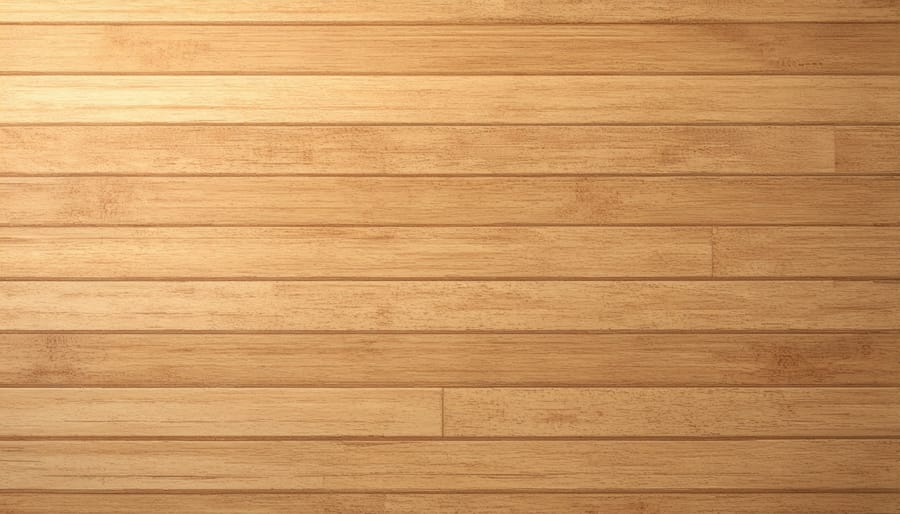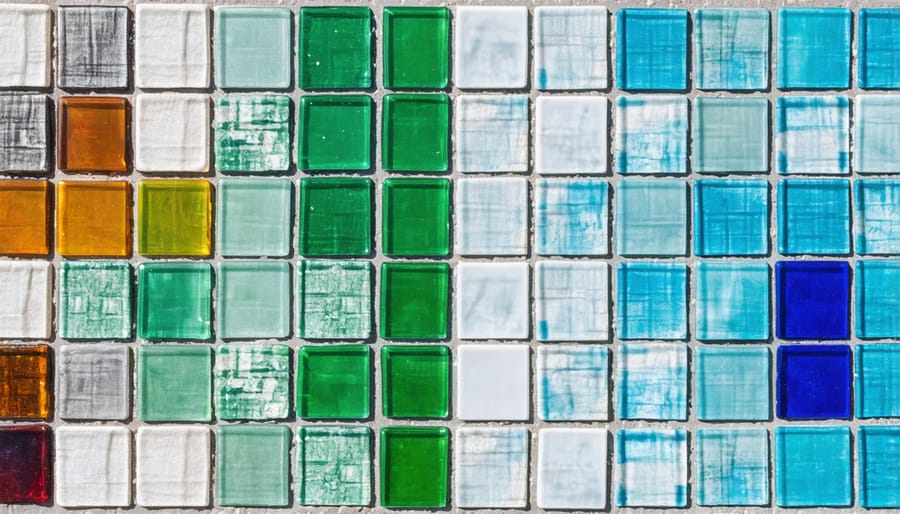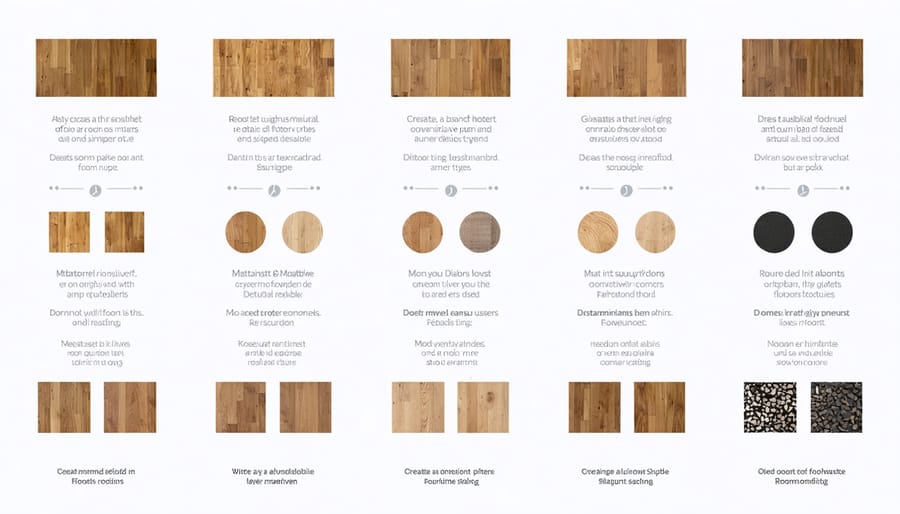
Beautiful Eco-Friendly Floors That Actually Last (And Where to Use Them)
Transform your living space into an eco-conscious sanctuary with sustainable flooring that aligns perfectly with today’s modern flooring trends. The right sustainable flooring choice does more than just reduce environmental impact—it creates lasting beauty, enhances indoor air quality, and often increases your home’s value.
From reclaimed hardwood that tells a story through its preserved character marks to innovative bamboo options that regenerate in just five years, sustainable flooring materials have revolutionized how we think about home design. Cork floors bounce back after decades of use while providing natural insulation, and recycled rubber tiles offer unmatched durability in high-traffic areas while keeping tires out of landfills.
Today’s eco-friendly flooring solutions combine environmental responsibility with stunning aesthetics, proving that sustainability never means sacrificing style. Whether you’re renovating a single room or planning a whole-house upgrade, choosing sustainable flooring materials represents an investment in both your home’s future and our planet’s well-being.
Natural and Renewable Flooring Materials
Bamboo: The Fast-Growing Champion
Among the many innovative flooring solutions available today, bamboo stands out as a remarkable sustainable choice. Growing up to 30 times faster than traditional hardwoods, bamboo reaches maturity in just 5-7 years, making it an incredibly renewable resource.
Bamboo flooring offers exceptional durability, often surpassing traditional hardwoods in hardness ratings. Its natural resistance to moisture makes it suitable for kitchens and bathrooms, though it’s equally stunning in living rooms and bedrooms. The material comes in various styles, from traditional vertical grain to strand-woven options that offer superior strength.
Available in both natural and carbonized finishes, bamboo can complement any design scheme. Light natural tones brighten spaces, while darker carbonized hues add warmth and sophistication. Installation is straightforward, typically using click-lock systems that DIY enthusiasts can handle.
While bamboo excels in many areas, it’s best suited for climate-controlled environments, as extreme humidity changes can affect its stability. Regular maintenance is simple – just sweep regularly and clean with a slightly damp mop to maintain its beauty for years to come.

Cork: Nature’s Cushion
Cork flooring offers a unique combination of comfort and sustainability, harvested from the bark of cork oak trees without harming them. What makes cork truly remarkable is its natural springiness underfoot, making it an excellent choice for areas where you’ll spend lots of time standing, like kitchens or home offices.
This renewable material comes with built-in temperature regulation and sound dampening properties, making it perfect for bedrooms and living spaces. Cork’s cellular structure also provides natural resistance to mold, mildew, and allergens, while its waxy substance called suberin helps repel insects and provides water resistance.
Available in tiles, planks, and sheets, cork flooring comes in various patterns and shades, from light beige to rich brown. While it’s durable, cork can dent under heavy furniture and may fade in direct sunlight, so it’s best suited for moderate-traffic areas away from large windows.
Maintenance is straightforward – regular sweeping and occasional damp mopping will keep your cork floors looking fresh for years. Just remember to reapply sealant every few years to maintain its protective barrier.
Reclaimed Wood: Beauty with History
Reclaimed wood flooring tells a unique story while helping preserve our forests. Sourced from old barns, factories, and historic buildings, each plank carries decades of character through its distinctive grain patterns, nail holes, and natural wear. This sustainable option gives new life to existing materials while offering exceptional durability – these boards have already stood the test of time. The aged wood’s natural patina creates unmatched visual warmth and depth that new materials simply can’t replicate. Available in various species like oak, pine, and chestnut, reclaimed wood works beautifully in both rustic and modern spaces. Beyond its aesthetic appeal, choosing reclaimed wood reduces deforestation and keeps valuable materials out of landfills, making it an environmentally conscious choice for your home.
Recycled and Upcycled Materials
Glass Tiles: From Bottles to Beautiful
Transform yesterday’s wine bottles into today’s stunning floor tiles! Recycled glass flooring offers a unique blend of sustainability and sophistication, creating mesmerizing patterns that catch and reflect light throughout your space. These eco-friendly tiles are made by crushing post-consumer glass into small pieces, mixing them with binding agents, and forming them into durable tiles that rival traditional materials in strength and beauty.
Available in an array of colors and sizes, glass tiles can create everything from subtle, frosted looks to bold, shimmering statements. The manufacturing process reduces landfill waste and requires less energy than producing new glass, making it an environmentally conscious choice that doesn’t compromise on style.
These tiles work exceptionally well in bathrooms, kitchens, and entryways, where their water-resistant properties shine. They’re also perfect for creating stunning accent walls or backsplashes. While typically more expensive than conventional tiles, their durability and unique aesthetic make them a worthwhile investment.
Maintenance is straightforward – regular sweeping and occasional mopping with a pH-neutral cleaner keeps them looking pristine. The non-porous surface resists staining and bacteria growth, making them both beautiful and practical for busy households.
For those concerned about slip resistance, many manufacturers offer textured options that provide additional grip while maintaining the distinctive glass appearance. Consider incorporating LED underlighting to enhance the tiles’ natural luminescence for a truly spectacular effect.

Rubber and PET: New Life for Old Materials
Think those old tires and plastic bottles are destined for the landfill? Think again! Innovative manufacturers are transforming these everyday materials into stunning, durable flooring options that are as kind to the planet as they are to your space.
Recycled rubber flooring, primarily made from discarded vehicle tires, offers exceptional durability and shock absorption, making it perfect for home gyms, playrooms, and high-traffic commercial areas. It’s naturally slip-resistant and provides excellent sound insulation, while its water-resistant properties make it ideal for basements or outdoor spaces.
PET (polyethylene terephthalate) flooring, created from recycled plastic bottles, is making waves in the sustainable flooring market. A single square foot of PET carpet can contain up to 40 recycled plastic bottles! The material offers impressive stain resistance, durability, and a soft, plush feel that rivals traditional carpet options.
Both materials require minimal maintenance – regular sweeping and occasional damp mopping keep them looking fresh. They’re also highly resistant to wear and tear, making them cost-effective long-term investments. For those concerned about indoor air quality, these materials typically emit fewer VOCs than traditional flooring options.
Installation is straightforward for both materials, with many products featuring user-friendly click-lock or adhesive systems that make them suitable for DIY projects. Choose from a variety of colors, patterns, and textures to match your design vision while making an environmentally conscious choice.

Making Smart Choices for Your Space
High-Traffic Areas: What Works Best
When it comes to high-traffic areas like entryways, hallways, and living rooms, not all sustainable flooring options are created equal. Bamboo flooring, particularly strand-woven varieties, offers exceptional durability that rivals traditional hardwood. Its density and resistance to denting make it perfect for busy households and commercial spaces.
Cork flooring is another excellent choice for high-traffic zones, especially when properly sealed. Its natural springiness helps it bounce back from heavy foot traffic, and it provides sound dampening properties – ideal for bustling family homes or office spaces. The key is choosing high-quality cork tiles with multiple protective layers.
For commercial spaces and extremely high-traffic areas, polished concrete stands out as a champion of sustainability and durability. Made from existing concrete subfloors, this option eliminates the need for additional materials while providing a sleek, modern look that withstands decades of use.
Reclaimed wood flooring, when properly finished, can handle significant foot traffic while telling a unique story. Look for hardwoods like oak or maple from old buildings – these materials have already proven their durability over time.
For moisture-prone high-traffic areas like kitchens or commercial entrances, recycled glass tiles offer an innovative solution. These eco-friendly tiles are virtually indestructible and maintain their appearance even under heavy use, while their slip-resistant properties add an extra safety benefit.
Moisture-Prone Rooms: Smart Solutions
Bathrooms and basements present unique challenges when it comes to sustainable flooring, but several eco-friendly options stand up beautifully to moisture while maintaining their green credentials. Cork flooring is a fantastic choice for these spaces, offering natural water resistance and antimicrobial properties that help prevent mold growth. Just make sure it’s properly sealed for maximum protection.
Natural stone tiles, particularly slate and limestone, are excellent sustainable choices that thrive in humid environments. These materials are incredibly durable, naturally resistant to moisture, and can last for generations when properly maintained. For a more budget-friendly option, consider recycled glass tiles, which provide excellent water resistance while giving these spaces a unique, modern look.
Another innovative solution is marmoleum, a natural linoleum made from linseed oil, wood flour, and other renewable materials. It’s naturally antimicrobial and water-resistant, making it perfect for bathroom floors. For basements, polished concrete with low-VOC sealers offers outstanding moisture resistance while utilizing existing foundation material.
When installing any flooring in moisture-prone areas, proper subfloor preparation is crucial. Use moisture barriers and ensure adequate ventilation to prevent water damage. For extra protection, consider installing radiant floor heating beneath your sustainable flooring – it helps keep the floor dry while improving energy efficiency.
Remember to select materials certified for use in wet areas and follow manufacturer guidelines for sealing and maintenance to ensure long-lasting performance.
Living Spaces: Comfort Meets Sustainability
When it comes to creating cozy, sustainable living spaces, selecting the right flooring material is crucial for achieving a complete room transformation. For bedrooms and living rooms, cork flooring stands out as an excellent choice, offering natural warmth underfoot and impressive sound-dampening properties. Its harvest from cork oak trees is sustainable, as the trees continue living and producing cork for decades.
Bamboo flooring has become increasingly popular for living spaces, thanks to its rapid renewable nature and hardwood-like appearance. Available in various colors and grain patterns, bamboo can withstand daily foot traffic while maintaining its elegant look. Plus, it’s naturally resistant to moisture and insects.
Another fantastic option is reclaimed wood flooring. By giving old timber a second life, you’re not only creating character-rich spaces but also reducing deforestation. Each plank tells a unique story, adding warmth and personality to your living areas.
For those seeking modern alternatives, wool carpet tiles offer exceptional comfort and sustainability. Made from natural, renewable materials, these tiles are both biodegradable and durable. They’re perfect for bedrooms, providing luxurious softness while being easily replaceable if damaged – a practical feature that extends their lifespan and reduces waste.
Consider layering these sustainable flooring options with natural fiber rugs made from jute or sisal to add texture and define spaces within larger rooms.
Installation and Maintenance Tips
Proper installation and maintenance are crucial for maximizing the lifespan of your sustainable flooring. Whether you’re working with bamboo, cork, or reclaimed wood, start by acclimating your materials to your home’s environment for at least 48 hours before installation. This step prevents future warping or gaps due to temperature and humidity changes.
For DIY installation, ensure you have the right tools and prepare your subfloor thoroughly. A level, clean surface is essential for any interior surface solutions, particularly sustainable materials that might be more sensitive to imperfections. Use eco-friendly adhesives when necessary, and follow manufacturer guidelines for spacing and expansion gaps.
Daily maintenance is straightforward: sweep or vacuum regularly to prevent dirt from scratching the surface. For wet cleaning, use a damp (not wet) mop with pH-neutral cleaners specifically formulated for your flooring type. Avoid harsh chemical cleaners that can damage both your floor and the environment.
Here are some material-specific tips:
– Cork: Clean spills immediately to prevent staining, and reapply sealant every 3-5 years
– Bamboo: Use felt pads under furniture and maintain consistent indoor humidity (40-60%)
– Reclaimed wood: Dust frequently and refinish every 7-10 years depending on wear
– Natural stone: Seal annually and clean with stone-specific products
– Recycled glass tiles: Regular sweeping and occasional deep cleaning with non-abrasive cleaners
For long-term protection, place mats at entrances to catch dirt and moisture, and consider implementing a no-shoes policy. When repairs are needed, address them promptly to prevent further damage. Many sustainable flooring materials can be spot-repaired rather than requiring complete replacement, making them even more environmentally friendly over time.
Making sustainable flooring choices isn’t just good for the environment – it’s a smart investment in your home’s future. From bamboo and cork to reclaimed wood and recycled materials, there are countless options that combine style, durability, and eco-consciousness. Remember that sustainable flooring isn’t just about the materials themselves; it’s also about choosing products with responsible manufacturing processes, low VOC emissions, and long-term durability. By selecting these materials, you’re not only creating a healthier living space but also contributing to forest conservation and waste reduction. Whether you’re renovating a single room or planning a complete home makeover, consider these green alternatives to traditional flooring. Your choice today impacts both your home’s value and our planet’s future.
